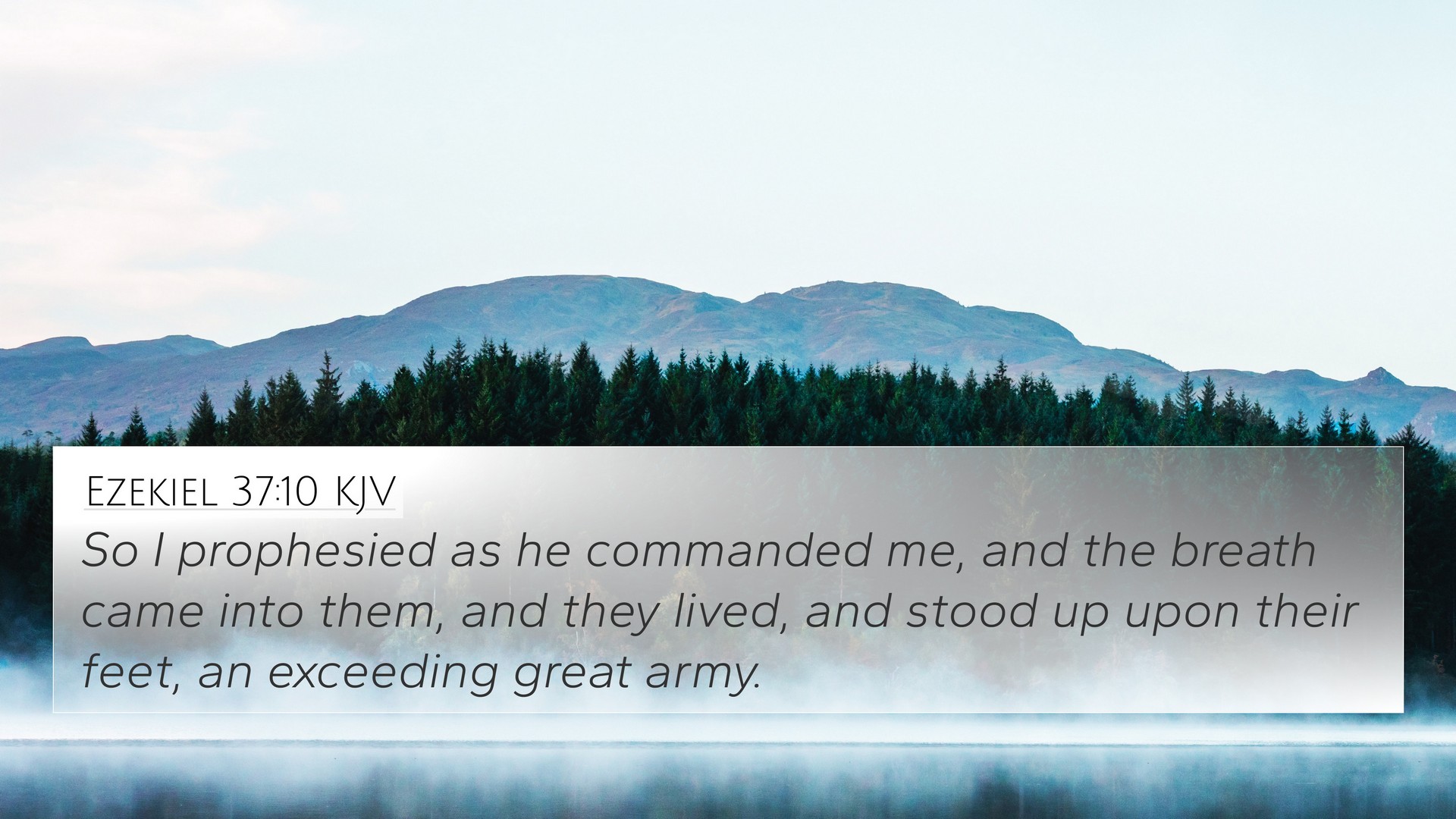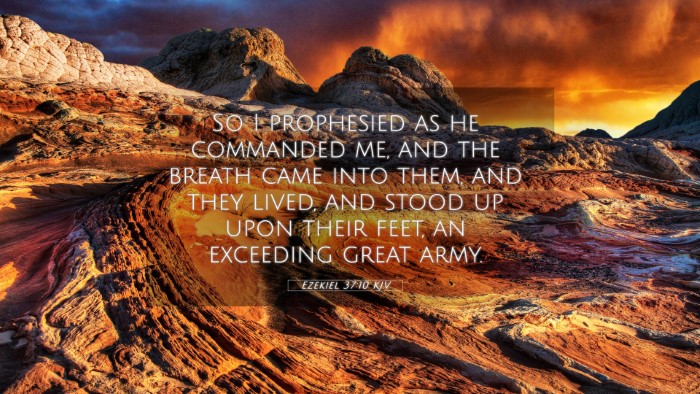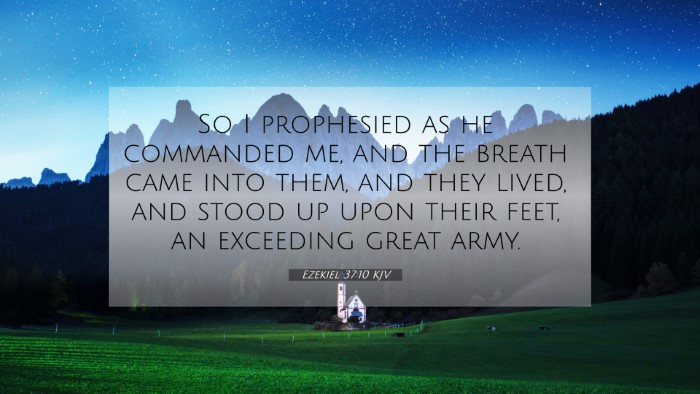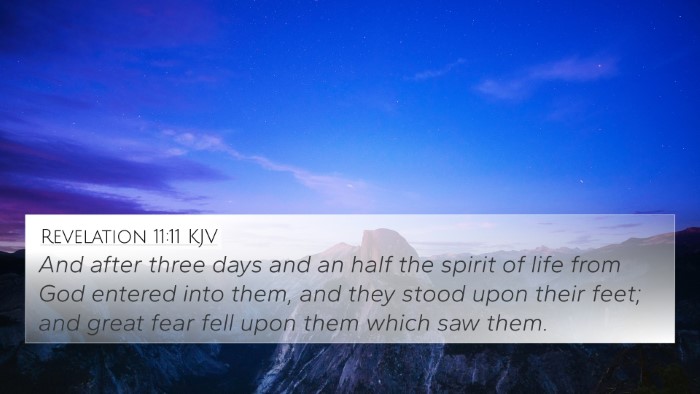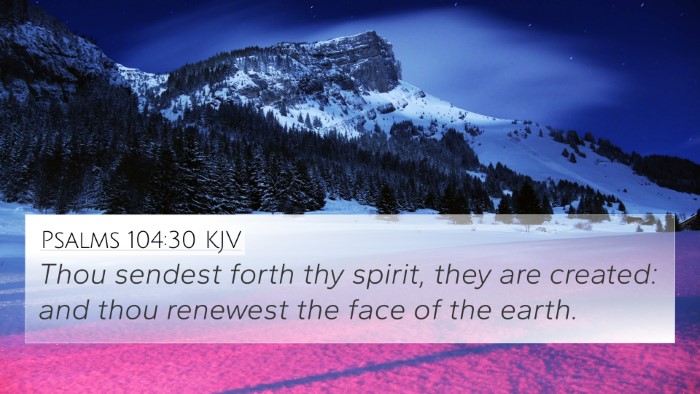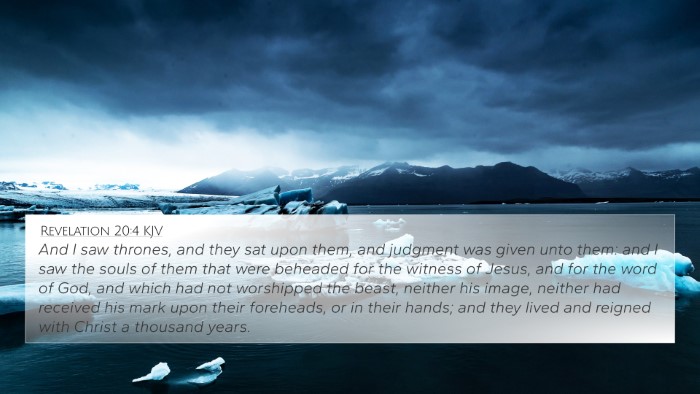Ezekiel 37:10 - Summary and Interpretation
Bible Verse: Ezekiel 37:10 - "So I prophesied as He commanded me, and the breath came into them, and they lived, and stood upon their feet, an exceeding great army."
Meaning and Insights
The verse from Ezekiel 37:10 captures a profound moment of resurrection and renewal, interpreted through the prophetic calling of Ezekiel to speak life into dry bones. This imagery serves as a powerful metaphor for spiritual revival and restoration. By combining insights from public domain commentaries, we delve into the layers of meaning embedded within this scripture.
- Matthew Henry's Commentary: Henry emphasizes the miraculous power of God in bringing dead situations to life. The breath represents the Spirit of God, which invigorates and transforms those who were lifeless into a robust community. He highlights the importance of obedience in Ezekiel's response to God's command, showcasing how God’s word not only instructs but empowers.
- Albert Barnes' Notes: Barnes discusses the historical context, noting that this vision of the valley of dry bones signifies the restoration of Israel. The bones represent the nation in its state of despair and hopelessness, while the breath symbolizes divine intervention. He reflects on God's promise of revival for His people, encouraging readers to trust in the divine assurance that life can emerge from desolation.
- Adam Clarke's Commentary: Clarke interprets the passage as a demonstration of God's ability to create and restore life. He examines the prophetic act as not merely a physical resurrection but also a spiritual awakening. Clarke makes connections to Christ's resurrection, thus framing this event in the broader narrative of Scripture where God breathes life not only into Israel but into humanity through Christ.
Cross-References and Thematic Connections
To enhance understanding of Ezekiel 37:10, we can explore significant Bible verse cross-references that share thematic connections:
- Genesis 2:7: God formed man from the dust and breathed into his nostrils the breath of life.
- John 3:6: That which is born of the flesh is flesh, and that which is born of the Spirit is spirit.
- Romans 8:11: The Spirit of God who raised Jesus from the dead lives in you and will give life to your mortal bodies.
- Isaiah 11:11: The Lord will recover the remnant of His people and gather them as He did before.
- John 11:43-44: Jesus raises Lazarus, illustrating His power over death.
- Revelation 11:11: The witnesses who were killed are resurrected, symbolizing God's overarching power to restore.
- Acts 2:4: The apostles filled with the Holy Spirit speak in other tongues, showing the power of God's spirit at work.
- 2 Corinthians 5:17: Therefore, if anyone is in Christ, he is a new creation; the old has passed away.
The Importance of Cross-Referencing
Utilizing cross-references can be an essential tool for understanding the Scriptures deeply. Here’s how one can implement Bible cross-referencing effectively:
- Tools for Bible Cross-Referencing: One can use tools such as a Bible concordance or cross-reference guide, which assist in identifying related verses.
- How to Use Bible Cross-References: When studying a verse, look for themes, words, and contexts that resonate in other parts of Scripture.
- Bible Reference Resources: Engaging with comprehensive Bible cross-reference materials reveals intricate connections between biblical texts.
- Cross-Referencing Bible Study Methods: Employ various methods such as thematic essays or comparative studies to explore related verses.
Conclusion
The power of Ezekiel 37:10 is a testament to the dynamic nature of God's word. Through the prophetic act of Ezekiel, we witness a vivid illustration of revival, not merely as a past event but as a continuing theme in the narrative of Scripture. By exploring cross-references and the insights from various commentaries, we can glimpse the critical connections that inform our understanding of the transformational power of faith that runs through the Bible.
